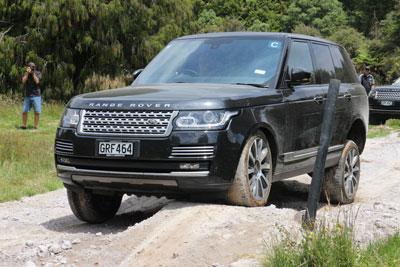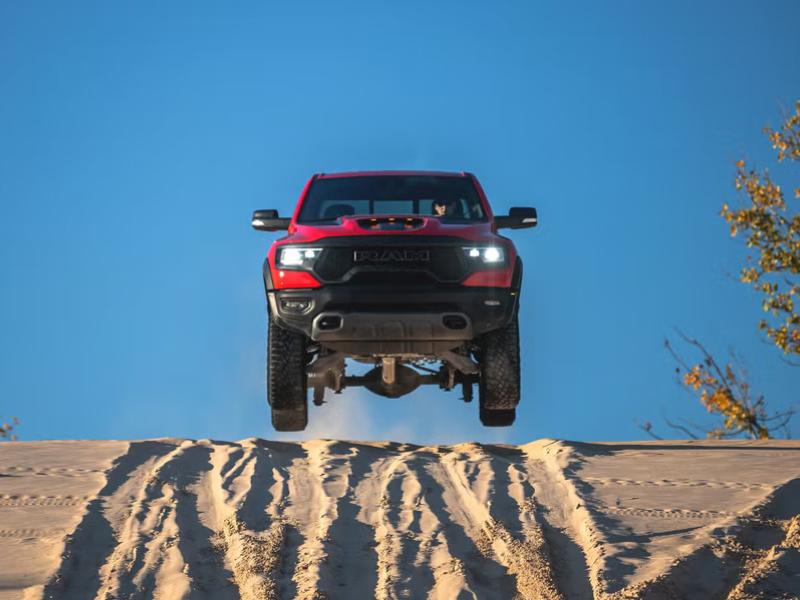You wouldn’t normally take a $255,000 motor vehicle onto a tight and twisting bush road, but we did at the launch of the new Range Rover. John Oxley reports.
The latest Range Rover has (arguably) more improvements than any model change that has come before – and yet it still manages to retain the key attributes that have kept it at the forefront of 4WD “royalty”.
Most important is the all-aluminium bodywork, designed especially to cut weight, and with it fuel consumption.
At the same time the new Rangie is longer and wider – making it roomier – but it’s lower, helping it gain a better drag coefficient than before, again to improve fuel economy. Another fuel saving measure is the option of a 3-litre V6 turbodiesel model, which, thanks to weighing 420kg less than the outgoing Range Rover, offers similar performance to the previous TDV8 while achieving an average fuel consumption figure of 7.5L/100km. This outstanding fuel economy is assisted by a stop-start system to improve town driving.
For those who DO want to take it off-road, the biggest boost is a change to the Terrain Response system, which analyses driving conditions and automatically selects the most suitable vehicle settings – the first time it’s been possible to just get in and drive off-road without having to think about where you’re going, or what you have to do.
But the Range Rover retains a low range transfer ‘box.
Of course, that’s an over-simplification, since off-road driving always requires some forethought, but at least you don’t have to set the Terrain Response to cater for differing conditions – although you still can if you want.
Another boost to improved off-road driving has been an increase of 200mm in wading depth to 900mm – again class-leading – while braked towability is now 3,500kg. Ground clearance has grown to 303mm – an increase of 17mm – and there’s 593mm of total travel on each wheel.
There are now two off-road height choices, enabling a lower centre of gravity, and thus higher speeds, for smooth gravel roads. The approach angle is a respectable 34.5 degrees, and departure 29.5 degrees.
Yet all this hasn’t come at the expense of the Range Rover’s on-road drive qualities, nor has it affected its high degree of luxury. In fact both are improved.
Refinement and noise levels are further improved by the stiffer body structure, acoustic lamination of the windscreen and side door glass, and new dual-isolated engine mounts, while ride and handling quality is enhanced by the completely re-engineered four-corner air suspension, together with electronic suspension control which allows drivers to select a sport setting when driving on twisting roads, or a softer comfort setting which uses an anti-lean dynamic to ensure passengers are more comfortable.
The difference between the two settings is quite marked, as we discovered on the tarmac drive portion of the launch, and on tight and twisting roads it’s definitely better to select the sporty option.
As mentioned, there’s no shortage of luxury in this latest Rangie, and the interior is packed with features for both front and rear seat passengers. These include keyless entry, soft door close with power latching, power upper and lower tailgates, cooler compartments, and an electrically deployable tow bar (optional).
There’s also a Meridian surround sound music systems with high quality sound, high-resolution displays, include the full digital instrument cluster and the central 8-inch touch-screen with Dual-View functionality (the latter an option), voice control and connectivity which provides seamless connectivity package for mobile devices,
Added to these are a four-zone climate control system giving cool or hot air for both front and rear passengers, and upgraded seating with luxurious new features such as multi-mode massage, and the new optional Executive Class rear seating package, plus more than118mm more rear legroom.
Optional are extensive, enabling customers to tailor their vehicle to suit their tastes and pocket, and Land Rover NZ brand manager Paul Rickets revealed that one customer had already up-specced the purchase price of his ordered vehicle to $300,000.
There’s a wide range of colours, finishes and special details, from the immaculately-trimmed colour-themed interiors of the exclusive Autobiography series, to the stylish range of alloy wheels up to 22 inches in diameter.
Of course this latest Range Rover has all the safety credentials to earn it a 5-star Euro Ncap crash test rating, with special features including electric steering, which enables Park Assist – which helps drivers parallel park their car in tight urban parking spots; adaptive cruise control – with new Queue Assist feature which allows the system to continue functioning at low speeds and down to a complete stop; intelligent emergency braking – to help drivers avoid a collision if the traffic ahead slows quickly or another vehicle suddenly moves into their lane; blind spot monitoring – with a new closing vehicle sensing feature to detect vehicles which are closing quickly from further behind; and reverse traffic detection – to warn drivers of potential collisions during reversing manoeuvres.
New Zealand customers have a choice of three engines. Starting with the 190kW 3-litre twin turbo V6 diesel engine, there is also a 700Nm 4.4-litre twin-turbo diesel V8 with 250kW, and a top-of-the-line 5-litre V8 supercharged petrol engine producing 375kW. All engines are paired with a smooth and responsive eight-speed automatic transmission.
As a result of the weight savings, performance is exhilarating across the range, with the supercharged model getting a sports car-like 5.5 seconds 0-100km/h sprint.
Coupled with the Adaptive Dynamics on sport setting, this results in rapid journey times, with the big Rangie able to carry speed into and out of corners without the need to use those big 308mm/305mm ventilated Brembo discs brakes overmuch.
Off-road, we went into the Off Road NZ Adventure Park at Rotorua to flex the new Range Rover’s muscles, and found that the big 4WD performed well in a variety of conditions – bearing in mind always that importers are unlikely to allow journalists into a situation where there’s the possibility of damaging either vehicles or occupants.
With the Terrain Response in the automatic setting it coped with every situation with ease, even a couple of very steep descents, and we have every reason to believe that owners will respond positively to this simplified system, although we suspect that a muddy paddock or a sandy beach will probably be as far off-road as most owners will go!
Prices
TDV6 HSE $195,000
SDV8 Vogue $210,000
Vogue SE Supercharged $255,000







